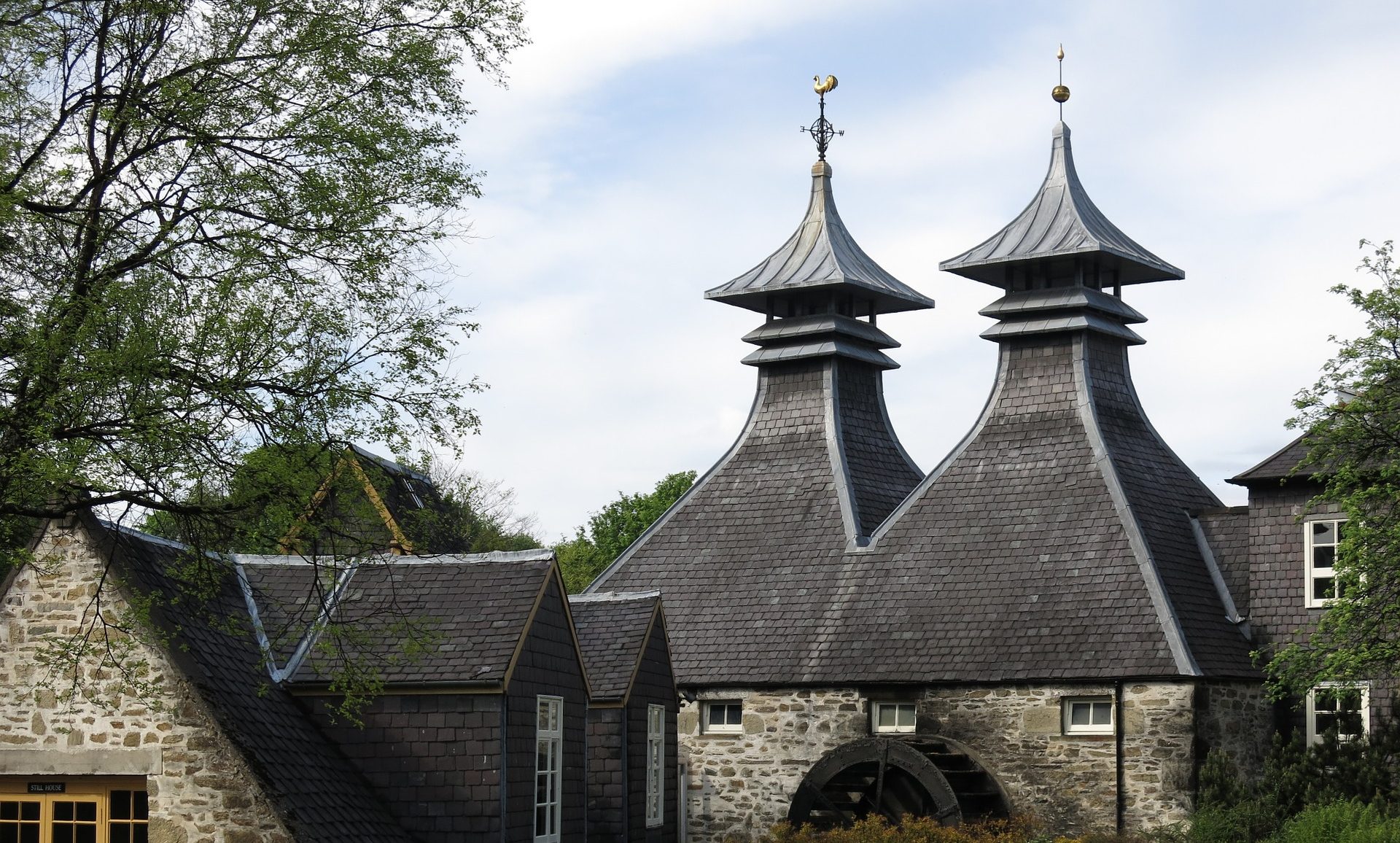20th October 2018
Whisky Production: Malting Barley
As mentioned in our previous article, “What is whisky made from?“, whisky is made from grains. Malt whisky more specifically is made from barley. The yeast added during the fermentation stage however are unable to use the starch present in the barley to produce alcohol. The starch must therefore first be converted into fermentable sugars. This is achieved through a process known as malting.
If left out in the field, this conversion of starch to sugar would occur naturally. Cytase and protease enzymes within the grains would begin to degrade the cell walls, making starch available for α-amylase and β-amylase enzymes to turn into sugar. It is this sugar that the barley embryo would then normally use as fuel to grow. Malting takes advantage of this natural process by tricking the barley into thinking it is time to grow. This sets off the chain of events to convert the starches into sugars which is then abruptly stopped before the embryo can consume them, after all, we need them to make alcohol.
The malting process consists of three stages: Steeping, germination, and kilning.
Steeping
The first stage in the malting process sees the grains steeped in water. The purpose of this is to increase the moisture content of the grain from 12% to around 45%. The grains are soaked in water for a period of several hours, during which time air is blown through the grains to ensure enough oxygen is present for the developing embryos. Once hydrated the enzymes begin to degrade the cell walls making the starch available and germination can begin. The water is then drained and the wet barley is allowed to rest in air, helping to control the heat and carbon dioxide levels produced during germination.
This process is repeated 2 to 3 times over a period of 2 to 3 days in order to ensure all the grains are evenly hydrated and germinating.
Germination

Once germination has started, the damp barley – now called green malt – is transferred to a germination vessel to allow further enzyme development. This was traditionally a malting floor where the grain would need to be turned by hand using a shovel – this led to an injury in many maltsters known as monkey shoulder. These days most malting is done in modern, industrial malting towers. However, some distilleries (Laphroaig for example) still produce a fraction of their own malt in the traditional manner and seeing this being done is a real highlight on their distillery tours.
Throughout this stage the green malt has to be turned frequently to ensure an even distribution of temperature and moisture and to prevent the grains from sticking together. Modern facilities have perforated floors where air can be blown through the grain bed to control temperature and moisture. Most also incorporate some kind of mechanical turning arm to mix the grain bed and keep it loose.
The germination stage lasts approximately 5 days, depending on the required malt specifications.
Drying in the Kiln
 As mentioned above, the germination process has to be stopped before the embryo consumes the sugars. This is done in the kiln – the chimney of which is the large pagoda roof featured on the majority of distilleries – by blowing hot air through the grains.
As mentioned above, the germination process has to be stopped before the embryo consumes the sugars. This is done in the kiln – the chimney of which is the large pagoda roof featured on the majority of distilleries – by blowing hot air through the grains.
It is at this stage that many whiskies pick up their smoky character. Prior to drying with air the green malt is introduced to smoke by lighting a peat fire below the kiln. Back in the day many distilleries would not have had access to other heating materials such as coal or wood and will have used what natural resources were available for drying the malt. In the case of many areas in Scotland, especially Islay, peat was an abundant material. Even after the introduction of better heating sources the practice continued due to the distinctive character it lends to the whisky.
By adjusting the level of air flow and temperature, malts of different flavours and colours can be produced. The moisture content of the dried malt is roughly 3 – 6%. The malt is then put through a deculmer machine to remove the tiny rootlets that emerged during germination before being stored ready for the next step in production: Mashing and Fermentation.
Want to learn more about whisky production?
Take a look at the next step in the production process: Mashing and Fermentation
You might also like:



- produced entirely in Scotland;
- that has been distilled at an alcoholic strength by volume of less than 94.8 per cent so that the distillate has an aroma and taste derived from the raw materials used in its production;
- that has been matured entirely in an excise warehouse or a permitted place in Scotland in oak casks of a capacity not exceeding 700 litres for a period of not less than three years;
- to which no substance has been added except water and/or plain caramel colouring; and
- that is bottled at a minimum alcoholic strength by volume of 40%.
